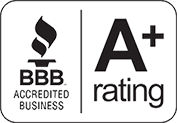Indoor air quality has been receiving increased attention lately. Outdoor air quality has been worsening and time spent indoors is rising for many people. Most people aren’t aware of all the dust, pet dander, and other airborne particles, chemical sprays, cooking odors, and other materials in indoor air. These indoor pollutants join with outdoor pollution to produce indoor air quality that can be as much as five times worse than outdoor air. For those who live, work, and sleep at home, this can increase allergies, sensitivities to chemicals and irritants, and breathing problems due to dry air conditioned or heated air.
At Sierra Air Conditioning & Plumbing, we have comprehensive and targeted indoor air quality solutions ready to install. Indoor air quality testing and feature installation, called IAQ services for short, is an important part of HVAC services for many homeowners these days. By putting today’s IAQ technologies to work, they can not only improve their indoor air, but lower their body’s overall reactivity to irritants and allergens by limiting day-to-day exposure. Humidity management in particular helps lungs, skin, and mucous membranes from drying and becoming even more sensitive to what’s in the air in their home. Here are some of the benefits:
- Filtering allergens with sub-micro HEPA filtration
- Attracting airborne particles and removing them from airflow
- Biologically neutralizing airborne pathogens that can cause allergies
- Providing more breathable air with less chance of allergen growth using humidity control
- Careful cleaning and maintenance of duct systems
- Balanced airflow for consistently high-quality indoor air, everywhere in the home
Clearing the Air with Multiple Efficient Strategies
High indoor air quality benefits allergy-prone people in several ways. There’s the direct removal of allergens, of course. Also, control of humidity levels helps prevent growth of organisms like mold. Germicidal UV lamp energy neutralizes pathogens of many types so they don’t reproduce and grow in ductwork and around the house.
For filtration, HEPA and air purification provide multiple solutions as well. They filter particles from the air with ultra-fine filters, and also draw pollutants out as they pass through the system using electrostatic energy. Humidity control helps find that sweet spot between dry air that allows particles to float freely in the air, and excessively moist air that causes particles to cling inside ducts and on other surfaces.
In other words, there are many ways that indoor air quality solutions detour allergens, helping even those with severe allergies to breathe easier. Reducing allergen levels is particularly helpful because it reduces the overall burden on a person’s body of allergy-producing substances. It reduces the airborne mess, to lower the body’s stress.
Stringent HEPA Filtration
The first step in improving indoor air for many people is the purchase of one or more portable HEPA filtration units, small store-bought systems that use a fan to draw air through an ultra-fine filter. These systems create some noise, sometimes soothing at bedtime. The volume of particles they remove requires occasional trips in search of replacement filters, sometimes different types for different brands of filtration systems. Small HEPA units provide filtration for a single room, such as the bedroom. HEPA filtration is well-known for its use in medical, laboratory, and manufacturing environments.
There, even small particles can bring contamination of products, disruption of laboratory results, or irritation and infection of patient bodies. Whole-house HEPA filtration uses a single filter system attached to the home’s ductwork which ensures that airflow throughout the house is protected. Residents can go from room to room enjoying indoor life, always benefiting from HEPA filtered air.
Technology-Enhanced Air Purification
Typically using electrostatic attraction to draw particles and substances from circulation, air purifiers, like HEPA filters, are also available in small scale units for individual rooms. It makes sense to engage this technology for purifying the whole volume of air circulating in the home. It’s an excellent way to intercept sources of contamination from all over, and protect every room. Air purification can be especially helpful for sensitive seniors or young children, who may find that breathing issues they’ve been experiencing are suddenly a non-problem. Removal of allergens through filtration and purification of the air can help with allergy-induced asthma as well. Reductions in material that typically lines duct walls over time and dust that accumulates on furniture are further benefits of purifying the air.
The Blue Glow: Germicidal UV Lamps
A bluish-purple glow that you may have seen in restaurants, doctor’s offices, and laboratories, UV light of used for germicidal purposes is at a different energy level from that used for tanning and making artwork glow. It should be used away from direct exposure to skin and eyes, and it has a strong neutralizing effect on biological material that passes through its shielded enclosure in HVAC systems.
For IAQ, these UV lamp systems are tucked inside the ductwork, where they treat air passing through. Bacteria, viruses, and other pathogens along with mold spores and mildew all become deactivated. Their ability to spread by reproduction on surfaces, in ductwork, in bathrooms and even in contact with the human body is reduced or eliminated.
In the Comfort Zone: Humidity Management
Lungs, nasal passages, and skin all love the right amount of humidity. Plants do, too. Humidity management systems include a control similar to a thermostat where the desired relative humidity value can be set. Recommended levels for comfort and health range from 30 to 50 percent. Outside, the range is much wider, with Las Vegas experiencing summer humidity in the single digits, New Orleans staying at the upper end of the range for months. In systems with both humidifier and dehumidifier components, the system maintains balance throughout the year. Complicating humidity management, heating and cooling equipment can affect humidity levels in unpredictable ways, depending on how often they run.
Prevailing outdoor humidity plays a role as well, and humidity management systems keep up with the changes and maintain a steady, comfortable moisture level. This helps keep dust from becoming airborne in dry air, sticking to ductwork internally when there’s excessive moisture in the air. Wood, paper, plants, and other humidity-sensitive items in the home also appreciate predictable moisture levels.
Things Can Get Messy in There: Duct System Hygiene
Many materials and substances pass through ductwork, much of which we’ve already mentioned. Grease fumes, moisture, and other factors cause adherence of particles to the interior of ducts. Some of it remains over time, building up a thick carpet of dust, dirt, allergens, and more. Every few years, a thorough cleaning helps to clear the ducts back to the original material, and remove everything else that you don’t want in your air. It’s an important part of indoor air quality care, and a good idea for all HVAC systems.
Sharing the Good Air with Airflow Balancing
IAQ features in your HVAC system process the air as it circulates and is returned to each room through your ductwork. By checking and maintaining the airflow in each room, you not only get the benefit of even temperatures, you also keep the contaminants flowing into your system and great air being distributed thoroughly throughout your home. Airflow balancing is a scientific process using instruments to measure airflow, and the results further improve the great IAQ system effects on your family’s life at home.
At Sierra Air Conditioning & Plumbing, our indoor air quality experts can help with cleaner indoor air, and make sure it’s flowing evenly throughout your home. We make your HVAC healthier at home.





